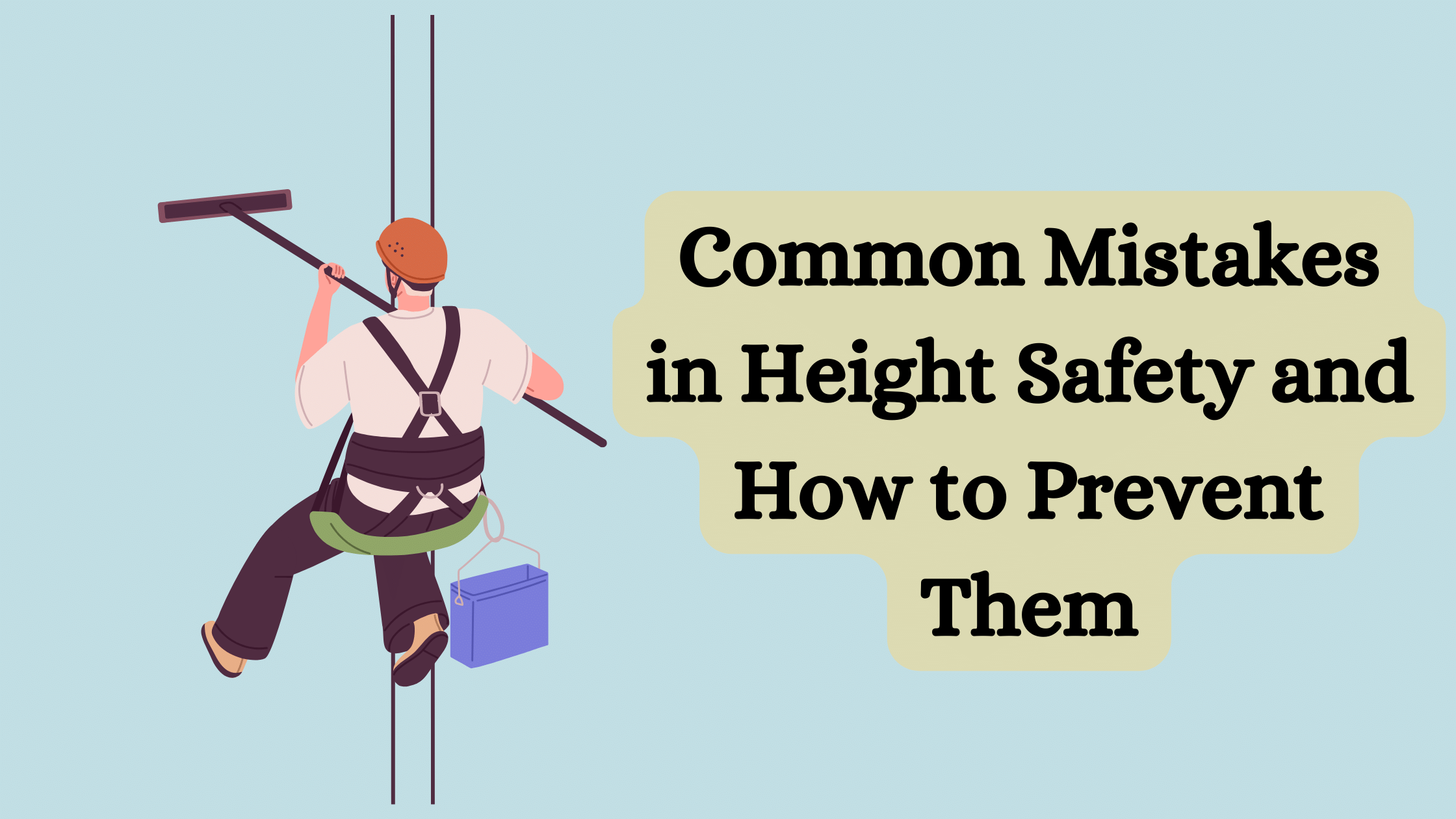
Working at heights presents inherent risks that require careful planning, proper equipment, and strict adherence to safety protocols to mitigate. However, despite the best intentions, mistakes can happen, leading to accidents, injuries, or even fatalities.
This article explores ten common mistakes in height safety. It guides how to prevent them, ensuring the well-being of workers and the success of projects.
1. Lack of Proper Training
One of the most common mistakes in height safety is inadequate training for workers who are required to work at elevated heights. Workers are at greater risk of accidents and injuries without proper training in using fall protection equipment, hazard recognition, and emergency procedures.
To prevent this mistake, employers should ensure that all workers receive comprehensive training and certification in height safety practices before they are allowed to work at heights.
2. Failure to Conduct Risk Assessments
Another frequent error is the omission of comprehensive risk assessments before beginning work at elevated heights. Risk assessments help identify potential hazards, evaluate the level of risk, and implement appropriate control measures to mitigate those risks.
Employers may need to pay more attention to critical safety hazards by neglecting to conduct risk assessments, leading to accidents and injuries. To avoid this mistake, employers should conduct comprehensive risk assessments for all tasks involving work at heights and address any identified hazards before work begins.
3. Inadequate Fall Protection Equipment
Using inadequate or improperly maintained fall protection equipment is a significant mistake that can compromise worker safety. Fall protection equipment, such as harnesses, lanyards, and anchor points, must meet industry standards and be regularly inspected and maintained for proper functionality.
Employers should invest in high-quality fall protection equipment and ensure workers receive proper training on its use and maintenance to prevent accidents and injuries.
4. Improper Use of Fall Arrest Systems
Misusing fall arrest systems is a common mistake that can seriously affect worker safety. Fall arrest systems, such as harnesses and lanyards, are designed to arrest falls in progress and prevent workers from hitting the ground or other surfaces.
However, if these systems are not used correctly, they may fail to provide adequate protection in the event of a fall. To prevent this mistake, workers should receive proper training on using fall arrest systems and follow manufacturer guidelines and industry best practices.
5. Ignoring Environmental Factors
Ignoring environmental factors such as weather conditions, terrain, and proximity to hazards is a common mistake that can increase the risk of accidents when working at heights. Adverse weather conditions, such as high winds or rain, can compromise the stability of elevated work platforms and increase the risk of falls.
Similarly, working near hazards such as power lines or unstable structures can pose significant risks to worker safety. To avoid this mistake, employers should assess environmental factors before commencing work at heights and implement appropriate control measures to mitigate risks.
6. Overlooking Proper Supervision
Inadequate supervision of workers engaged in tasks at heights is another common mistake that can compromise safety. Proper supervision ensures that workers follow safety protocols, use fall protection equipment correctly, and adhere to established procedures. Without adequate supervision, workers may take unnecessary risks or fail to recognize hazards, increasing the likelihood of accidents and injuries.
To prevent this mistake, employers should designate competent supervisors to oversee work at heights and provide ongoing guidance and support to workers as needed.
7. Neglecting Regular Inspections and Maintenance
Refrain from regular inspections and maintenance of fall protection equipment and elevated work platforms is a common mistake that can lead to equipment failure and accidents. Fall protection equipment should be inspected before each use and regularly maintained to ensure proper functionality.
Similarly, elevated work platforms, such as scaffolding or aerial lifts, should be inspected regularly for structural integrity and stability. To avoid this mistake, employers should establish a schedule for inspections and maintenance and ensure that workers are trained to promptly identify and report any issues.
8. Failure to Communicate Hazards
Communicating hazards effectively is a common mistake that can lead to accidents when working at heights. Workers may need to be made aware of potential hazards or fail to recognize the risks’ seriousness.
Employers should prioritize clear and effective communication of hazards, safety procedures, and emergency protocols to all workers involved in tasks at heights. This includes providing proper signage, conducting safety briefings, and encouraging open dialogue between workers and supervisors.
9. Taking Shortcuts
Taking shortcuts or bypassing safety protocols is a dangerous mistake that can severely affect worker safety when working at heights. Whether skipping proper training, using makeshift fall protection equipment, or ignoring safety procedures, cutting corners increases the risk of accidents and injuries.
To prevent this mistake, employers should emphasize the importance of following established safety protocols and provide adequate resources and support to ensure compliance.
10. Failure to Learn from Incidents
Finally, failing to learn from past incidents is a common mistake that can perpetuate unsafe practices and increase the risk of future accidents. Each incident or near-miss should be thoroughly investigated to identify root causes, implement corrective actions, and prevent similar incidents from occurring in the future.
By fostering a culture of continuous improvement and learning from mistakes, employers can create a safer work environment and protect the well-being of workers engaged in tasks at heights.
Mitigating Risks through Vigilance, Training, and Quality Equipment
Avoiding common mistakes in height safety is essential for protecting workers’ well-being and ensuring project success. By providing proper training, conducting thorough risk assessments, investing in high-quality equipment, and fostering a safety culture, employers can mitigate risks and create a safe working environment for tasks involving work at heights.
Workers must be vigilant, follow established safety protocols, and communicate effectively to prevent accidents and injuries when working at elevated heights.
By addressing these common mistakes and prioritizing height safety, employers and workers can reduce the risk of accidents and create safer workplaces for everyone involved.